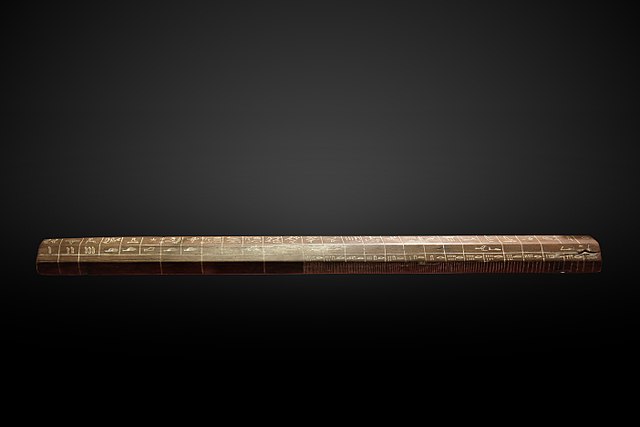An ell is a northwestern European unit of measurement, originally understood as a cubit. The word literally means "arm", and survives in the form of the modern English word "elbow" (arm-bend). Later usage through the 19th century refers to several longer units, some of which are thought to derive from a "double ell".
The ell was originally a cubit, later replaced by the cloth-ell or "double ell".
Historic standard units of the city of Regensburg: from left to right, a fathom (Klafter), foot (Schuch) and ell (Öln).
The Dunkeld ell explained on an information board outside The Ell Shop
The cubit is an ancient unit of length based on the distance from the elbow to the tip of the middle finger. It was primarily associated with the Sumerians, Egyptians, and Israelites. The term cubit is found in the Bible regarding Noah's Ark, the Ark of the Covenant, the Tabernacle, and Solomon's Temple. The common cubit was divided into 6 palms × 4 fingers = 24 digits. Royal cubits added a palm for 7 palms × 4 fingers = 28 digits. These lengths typically ranged from 44.4 to 52.92 cm, with an ancient Roman cubit being as long as 120 cm.
Cubit rod of Maya, 52.3 cm long, 1336–1327 BC (Eighteenth Dynasty)
The Nippur cubit-rod in the Archeological Museum of Istanbul, Turkey





